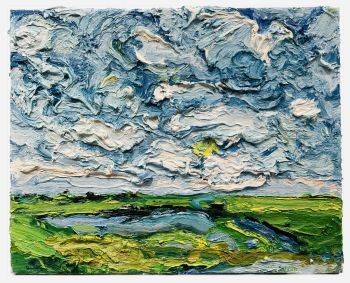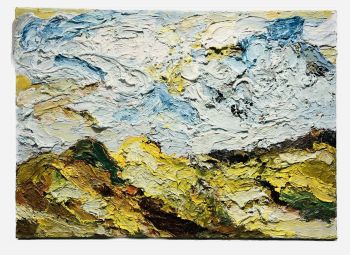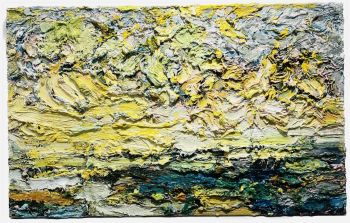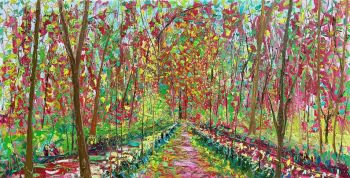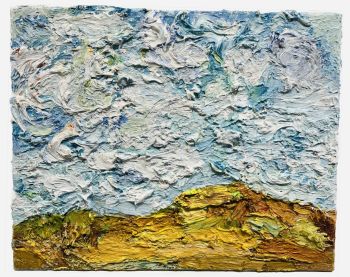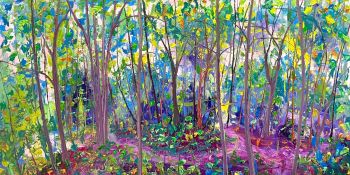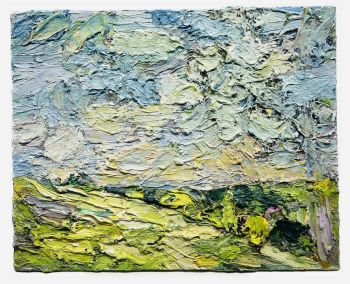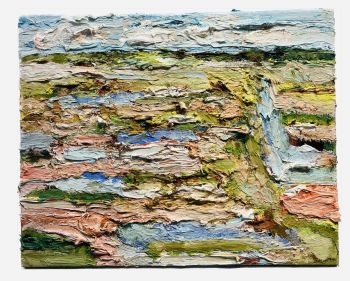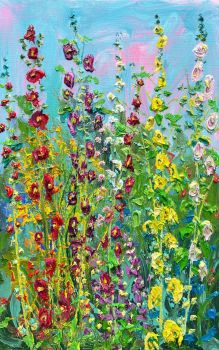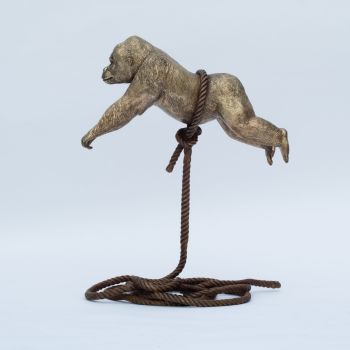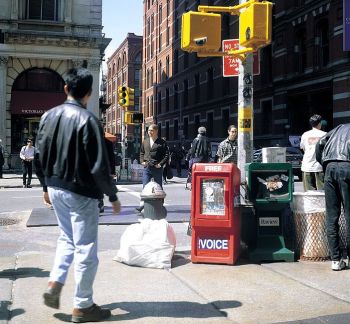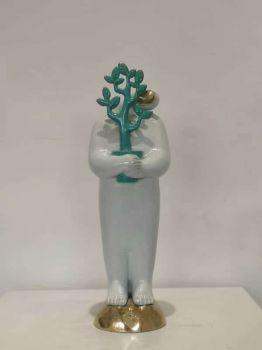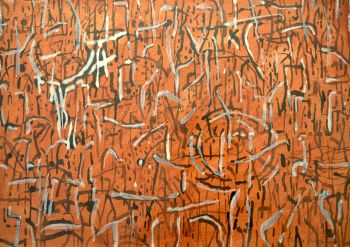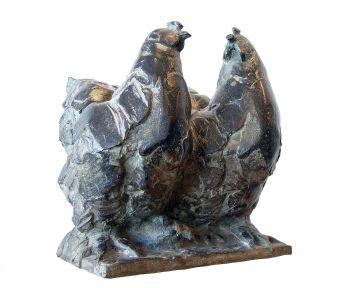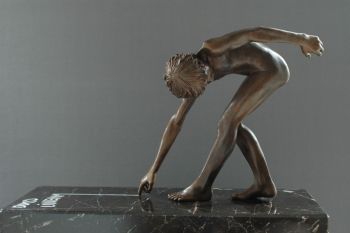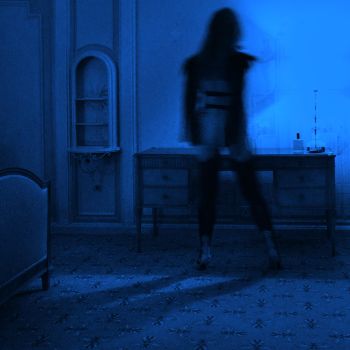Let's take it back to the 80's: neo-Expressionist art!
The 20th century was a seriously exciting time in terms of developments within the field of fine art, shifting from Modernism to Postmodernism through an enormous variety of movements and styles. Cubism, Dadaism, Constructivism, Abstract Expressionism, Magic Realism, Conceptualism, the list of ism’s goes on and on, but there is one decade that often gets overlooked in the retrospectives: the 1980’s.
In recent years however, this decade has begun to receive an increasing amount of attention. That might seem logical since the generation that grew up in the 1980’s is now well into its forty’s and fifty’s, ripe enough for some retrospection.
But the reason why the 80’s suddenly appear so vital is due to the fact that, in comparison, the 90’s and noughties lack substance, at least according to British artist Stuart Semple (1980).
He argues that the honest and bright visual language which developed during the eighties was transformed and subsequently lost within the homogenized and manufactured pop culture of the following decades.
On the other hand, historians believe that the activist art of the 80’s paved the way for today’s contemporary art, which is often politically and socially charged. 
Rob Scholte, Mockery by Two Lesbians (Bespotting door Twee Potten), 1983. Here, Scholte plays with the idiom of pornography, a "low" form of art.
Generally speaking, the 80’s can be defined as an era that saw popular culture and mass-consumerism reach new heights, with the rising availability of cable television and the introduction of the personal computer.
New mediums such as video and installation art were also on the rise and at the same time, galleries were popping up left, right and center, further commercializing the art world.
The 80's is also referred to as the wild decade, as youth groups became more rebellious amid all kinds of socio-political upheavals, the British Punk movement as a leading example.
That same rebellious attitude caught on among a new generation of artists throughout the Western world.
Following years of abstract, minimalistic and conceptual tendencies, all focused on portraying the intangible, and in the face of a media-saturated world, these artists revived figurative painting and used it to translate their social discomforts: a form of protest.
They were referred to as the “neo-Expressionists”, with West-German and American cohorts at the wheel.
Jiri Dokoupil, Untitled, 1984. This ironic self-portrait shows an artist torn between neo-espressionist ideals (punk) and a commercialized art world (symbolized by his Lacoste shirt).
Even though artists like Georg Baselitz (1938) and Anselm Kiefer (1945) officially belong to the first generation of neo-Expressionists, using their paintings to probe Germany’s still raw fascism memory, they were already established within the art scene before the 80’s took off.
Younger artists such as Martin Kippenberger (1953-1997) and Jiri Georg Dokoupil (1954) formed part of the “Neue Wilde”, a group of neo-Expressionistic painters that started creating raw, provocative but often humoristic works.
In the US, artists such as Jean-Michel Basquiat (1960-1988) and Keith Haring (1958-1990) spearheaded the neo-Expressionistic wave, both famous for their “street art” influences.
David Salle (1952) and Julian Schnabel (1951) were equally noteworthy contributors, all of whom were featured in the Whitney Museum’s exhibition Fast Forward: Painting from the 1980’s, earlier this year.
Considering the recent developments, it shouldn’t come as a surprise either that Basquiat’s ‘Untitled’ (1982) painting of a skull broke records at Sotheby’s May 2017 postwar and contemporary auction, bringing in $110.5 million dollars.
Jean-Michel Basquiat, Untitled, 1982. The troubled Basquiat's graffiti skull forms a riff on self-portraiture traditions.
In the Netherlands, Erik Andriesse (1957-1993) and Rob Scholte (1958) were amongst those identified with the movement.
Andriesse is most well-known for his bold paintings of flowers, skulls and animal skeletons, whilst Scholte caused several controversies by obviously citing famous artworks.
According to Scholte, the reproduction aspect was by far the most important element in his work, because that’s what reaches the widest audience. 
Erik Andriesse, Amaryllis, 1986. Andriesse was famous for his flowers, a genre that, following the era of conceptual art, certainly went against the grain.
Another very important art world figure that is also associated with the (late) neo-Expressionists is the famous painter Marlene Dumas (1953).
Dumas grew up in a severely image-deprived South Africa, with outdated magazines as her only form of artistic inspiration. So she drew pictures of the curvy women she came across in there.
When Dumas moved to Amsterdam in 1976 to study at the Ateliers, she was heavily encouraged to jump on board of the conceptual art train. After experimenting with this new art form by creating abstract drawings and collages, she made a bold move by returning to painting heads and figures at the beginning of the 80’s.
Contrary to many neo-Expressionists, Dumas didn’t belong to any official group and wasn’t immediately set on exhibiting her art in New York, the movement’s epicenter. Yet her work is so characteristic of neo-Expressionism’s essence: going back to objectivity in painting.
Dumas focuses on the image and often depicts humans in tense situations, surrounding controversial themes such as racial intolerance and war.
Marlene Dumas, The White Disease, 1985. This portrait refers to the fact that during apartheid, the white people themselves weren't even aware of their own cruelty.
Because the neo-Expressionism movement largely coincided with the commercializing of the art system, it’s authenticity became more frequently questioned, leading to it’s unsurmountable demise. Across the world today, museums have been featuring 80’s art in their exhibitions, asking different questions as to its rise in popularity and relevance to today’s artistic climate.
Looking for available art online? Please have look at Gallerease!


